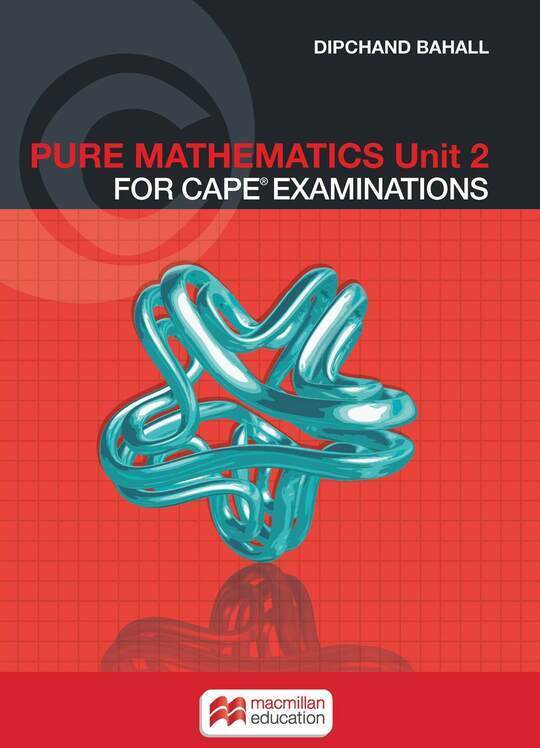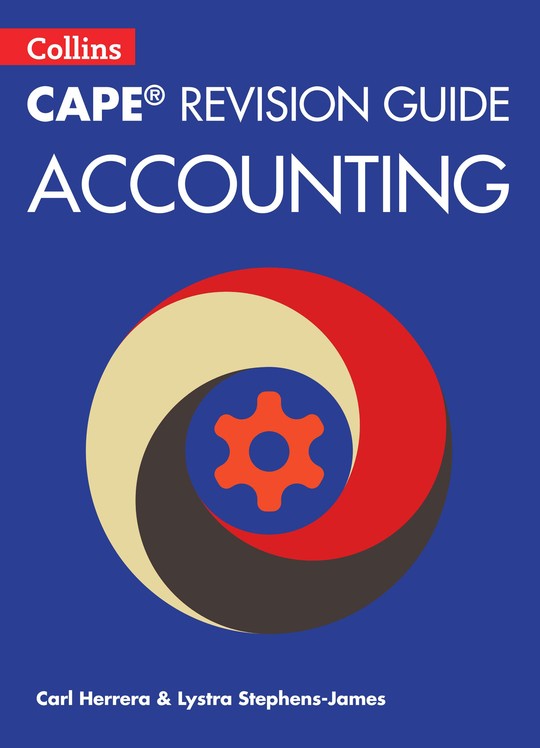
Maths for CAPE® Examinations Volume 2
US$ 27.71
The publisher has enabled DRM protection, which means that you need to use the BookFusion iOS, Android or Web app to read this eBook. This eBook cannot be used outside of the BookFusion platform.
Description
Contents
Reviews
Language
English
ISBN
9780230465749
Cover
Title Page
Copyright
Contents
INTRODUCTION
MODULE 1 COMPLEX NUMBERS AND CALCULUS II
CHAPTER 1 COMPLEX NUMBERS
Complex numbers as an extension to the real numbers
Powers of i
Algebra of complex numbers
Addition of complex numbers
Subtraction of complex numbers
Multiplication of a complex number by a real number
Multiplication of complex numbers
Equality of complex numbers
Conjugate of a complex number
Division of complex numbers
Square root of a complex number
Roots of a polynomial
Quadratic equations
Other polynomials
The Argand diagram
Addition and subtraction on the Argand diagram
Multiplication by i
Modulus (length) of a complex number
Argument of a complex number
Trigonometric or polar form of a complex number
Exponential form of a complex number
De Moivre’s theorem
Locus of a complex number
Circles
Perpendicular bisector of a line segment
Half-line
Straight line
Inequalities
Intersecting loci
Cartesian form of loci
CHAPTER 2 DIFFERENTIATION
Standard differentials
Differentiation of ln x
Differentiation of ex
Chain rule (function of a function rule)
Differentiating exponential functions of the form y = ax
Differentiating logarithms of the form y = loga x
Differentiation of combinations of functions
Differentiation of combinations involving trigonometric functions
Tangents and normals
Gradients of tangents and normals
Equations of tangents and normals
Implicit differentiation
Differentiation of inverse trigonometric functions
Differentiation of y = sin–1x
Differentiation of y = tan–1x
Second derivatives
Parametric differentiation
First derivative of parametric equations
Second derivative of parametric equations
Partial derivatives
First order partial derivatives
Second order partial derivatives
Applications of partial derivatives
CHAPTER 3 PARTIAL FRACTIONS
Rational fractions
Proper fractions: Unrepeated linear factors
Proper fractions: Repeated linear factors
Proper fractions: Unrepeated quadratic factors
Proper fractions: Repeated quadratic factors
Improper fractions
CHAPTER 4 INTEGRATION
Integration by recognition
When the numerator is the differential of the denominator
The form ʃf'(x)[f(x)]n dx, n ǂ –1
The form ʃf'(x)ef(x)dx
Integration by substitution
Integration by parts
Integration using partial fractions
Integration of trigonometric functions
Integrating sin2 x and cos2 x
Integrating sin3 x and cos3 x
Integrating powers of tan x
Integrating products of sines and cosines
Finding integrals using the standard forms
CHAPTER 5 REDUCTION FORMULAE
Reduction formula for ʃsinn x dx
Reduction formula for ʃcosn x dx
Reduction formula for ʃtann x dx
Other reduction formulae
CHAPTER 6 TRAPEZOIDAL RULE (TRAPEZIUM RULE)
The area under a curve
MODULE 1 TESTS
MODULE 2 SEQUENCES, SERIES AND APPROXIMATIONS
CHAPTER 7 SEQUENCES
Types of sequence
Convergent sequences
Divergent sequences
Oscillating sequences
Periodic sequences
Alternating sequences
The terms of a sequence
Finding the general term of a sequence by identifying a pattern
A sequence defined as a recurrence relation
Convergence of a sequence
CHAPTER 8 SERIES
Writing a series in sigma notation (∑)
Sum of a series
Sum of a series in terms of n
Method of differences
Convergence of a series
Tests for convergence of a series
CHAPTER 9 PRINCIPLE OF MATHEMATICAL INDUCTION (PMI): SEQUENCES AND SERIES
PMI and sequences
PMI and series
CHAPTER 10 BINOMIAL THEOREM
Pascal’s triangle
Factorial notation
Combinations
General formula for nCr
Binomial theorem for any positive integer n
The term independent of x in an expansion
Extension of the binomial expansion
Approximations and the binomial expansion
Partial fractions and the binomial expansion
CHAPTER 11 ARITHMETIC AND GEOMETRIC PROGRESSIONS
Arithmetic progressions
Sum of the first n terms of an AP
Proving that a sequence is an AP
Geometric progressions
Sum of the first n terms of a GP (Sn)
Sum to infinity
Proving that a sequence is a GP
Convergence of a geometric series
CHAPTER 12 NUMERICAL TECHNIQUES
The intermediate value theorem (IMVT)
Finding the roots of an equation
Graphical solution of equations
Interval bisection
Linear interpolation
Newton–Raphson method for finding the roots of an equation
CHAPTER 13 POWER SERIES
Power series and functions
Taylor expansion
The Maclaurin expansion
Maclaurin expansions of some common functions
MODULE 2 TESTS
MODULE 3 COUNTING, MATRICES AND DIFFERENTIAL EQUATIONS
CHAPTER 14 PERMUTATIONS AND COMBINATIONS
The counting principles
Multiplication rule
Addition rule
Permutations
Permutations of n distinct objects
Permutation of r out of n distinct objects
Permutations with repeated objects
Permutations with restrictions
Permutations with restrictions and repetition
Combinations
Combinations with repetition
CHAPTER 15 PROBABILITY
Sample space and sample points
Events: mutually exclusive; equally likely
Probability
Rules of probability
Conditional probability
Tree diagrams
Probability and permutations
Probability and combinations
CHAPTER 16 MATRICES
Matrices: elements and order
Square matrices
Equal matrices
Zero matrix
Addition and subtraction of matrices
Multiplication of a matrix by a scalar
Properties of matrix addition
Matrix multiplication
Properties of matrix multiplication
Identity matrix
Multiplication of square matrices
Transpose of a matrix
Properties of the transpose of a matrix
Determinant of a square matrix
Determinant of a 2 × 2 matrix
Determinant of a 3 × 3 matrix
Properties of determinants
Singular and non-singular matrices
Solving equations using determinants (Cramer’s rule)
Using Cramer’s rule to solve three equations in three unknowns
Inverse of a matrix
Inverse of a 2 × 2 matrix
Cofactors of a 3 × 3 matrix
Inverse of a 3 × 3 matrix
Properties of inverses
Systems of linear equations
Row reduction to echelon form
Finding the inverse of a matrix by row reduction
Solving simultaneous equations using row reduction
Systems of linear equations with two unknowns
Intersecting lines
Parallel lines
Lines that coincide
Systems of linear equations with three unknowns
Unique solution
No solutions
Infinite set of solutions
Solution of linear equations in three unknowns: geometrical interpretation
Applications of matrices
CHAPTER 17 DIFFERENTIAL EQUATIONS AND MATHEMATICAL MODELLING
First order linear differential equations
Practical applications
Second order differential equations
When the roots of the AQE are real and equal
When the roots of the AQE are real and distinct
When the roots of the AQE are complex
Non-homogeneous second order differential equations
When f(x) is a polynomial of degree n
When f(x) is a trigonometric function
When f(x) is an exponential function
Equations reducible to a recognisable form
Mathematical modelling
MODULE 3 TESTS
UNIT 2—MULTIPLE CHOICE TESTS
INDEX
The book hasn't received reviews yet.











